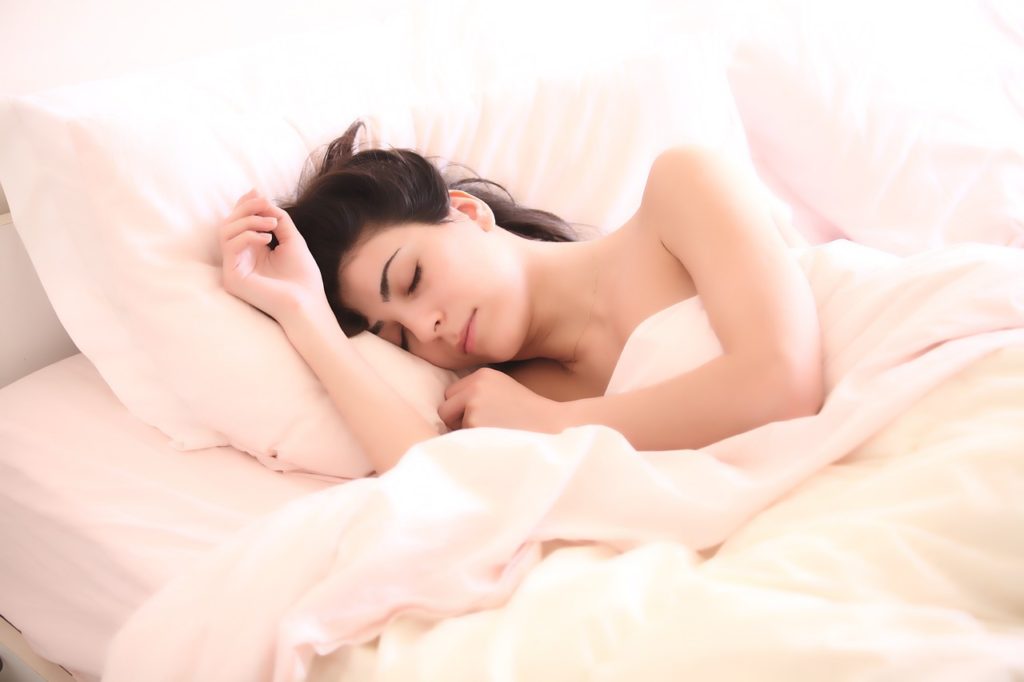Creating Your Perfect Sleep Space
Creating a good bedroom feel is essential for the modern era. Gone are the times when we’d bunker down in a dark cave and sleep for a good while until we needed food again. This means a lot of sleep disorders and sleep difficulties are very much a modern invention. But that doesn’t mean we need to suffer with them. Need some help with your sleeping patterns? Maybe you just think it’s time for a bedroom overhaul? Either way, this is the place for you. Check out a few of the ideas below if you want to clean up your night time routine and create the perfect sleeping space.

There’s a lot of things involved in why our sleep is so disruptive, such as artificial light from mobile devices and too much caffeine to keep us awake at all other points. We could all do with some solutions to putting these disruptions down and picking up some good sleep instead.
Spruce Up The Air
If you have a lot of indoor house plants scattered throughout your home, then you’re well on the way to having plenty of fresh air during the daytime. However, at night, the process of photosynthesis changes and plants actually release carbon dioxide whilst taking up oxygen the same way we do. The fact that it’s dark is to blame for this. Photosynthesis can only happen during the day after all.
There are plenty of natural ways to spruce up your bedroom air to make it clean and fresh to breathe in. You can use a plant’s natural respiratory patterning to make you more drowsy and likely to sleep as carbon dioxide has an effect on cognitive processes, but this isn’t exactly a safe method. This can also lead to your sleep being even more disrupted due to a change in breathing, which your body knows you need to be aware of, so you wake up a lot during the night. It also means you toss and turn to find the best position to breathe in, which saps more energy than we can refill.
Yet there are some plants that can swap this function around and actually produce oxygen at night because of the dark. These include aloe vera plants and orchids, or something like a potted neem tree. If you’re looking for a good redec, then include these in your plans. You can also use natural air filters like candles made of beeswax, with an extra hint of aromatherapy.
Find The Best Mattress For You
Typically, your mattress should be replaced every 8 years to combat natural wear and tear, dust mites and bedbugs, and for a greater ability to sleep comfortably. For something like bad back issues that you have trouble sleeping with, you’ll want something like a pillow top or adjustable mattress. These are softer to sleep on whilst still having a firm foundation, so you won’t roll too much whilst having some great support. It also means you can move into positions you like with some easy maneuverability.
With review sites such as https://www.mattress-guides.net/our-mattress-reviews/, it couldn’t be easier to find a good mattress, with every need you could look for laid out in a comparison view. There’s a lot of stock in finding a mattress that isn’t too lumpy or soft, and has a bit of bounce back to keep you from sinking in and getting trapped for the night.
Maintain A Cool Temperature
Sleeping in cool temperatures underneath blankets and duvets is the best way to fall asleep. If you like your room to be warm at night however, try and turn the thermostat down to the lowest you can stand it.
Sleep propensity is at it’s greatest when our core body temperature dips from the usual 40 degrees, which happens naturally at about 4 am. Yet this can be recreated at earlier times by making the external air cooler as well, mimicking this effect. You can very well trick your sleep wake cycle into thinking it’s later than it is, and fall asleep at an earlier time and get some well earned rest.
Closing the curtains can help maintain the temperature more than you think, and keep cool air trapped inside for a better environment. This keeps it circling and blocks out outside temperatures that could disrupt your painstakingly crafted sleeping pattern.
Try To Keep It Dark
Any kind of light in a sleeping space makes us less likely to fall asleep quickly and get good rest. Melatonin, the neurochemical that’s released in regards to sleep, has a decreased production when we have natural light and artificial light streaming in through our windows and right next to our faces.
Making it darker means there’s less signals for both your eyes and skin to detect and increases a melatonin production, helping us to sleep better for longer. Your brain stays cosy in its shell and doesn’t need to register any external cues, making sleep so much more beneficial and relaxing.
Do away with night lights and any blue light sources. Masking TV on buttons with duck tape can sort this issue, and having the lights low or off for about 10 minutes before you mean to actually fall asleep makes getting to sleep a lot easier when we don’t feel tired. It’s a great home cure for insomnia as a result.
Get Some Blackout Curtains
Blackout curtains aren’t just for emergencies. They have many functions, and the most important of them all is helping us to sleep. Heavy duty curtains won’t necessarily make a room stuffy or too warm, as they can muffle outside noise and keep any external factors from affecting the indoors. They’re honestly quite the saving grace.
For a better effect of natural light, having curtains with no chinks or rips to let the sun stream on through is essential to enjoy some proper rest. If these go against your style, or you don’t like the thought of being completely cut off from the outside world at night, check out http://www.diynetwork.com/how-to/rooms-and-spaces/doors-and-windows/buying-blackout-curtains for tips and tricks on getting the best room setup whilst incorporating some good curtains that you usually wouldn’t opt for.
It doesn’t have to be expensive either, as the curtains you already have hanging up can be lined with new material to turn them into some pretty effective blackout curtains.
Turn Off Your Phone
This method often seems like it’s overdone in the news, but it is a serious matter for those of us who want to improve our sleep. Plenty of apps use blue color schemes and backgrounds, and therefore we once again produce less melatonin which is needed to sleep due to the shorter wavelengths. It’s quite sciency, but easy to get to grips with when explaining to your friends and families why they should have a period of no technology just before bed.
Try using soft light to read or do some stretches before you decide to drop off. This settles out bodies into sleep at a slow pace, and can even help us feel more tired with no headaches involved. Reading before bed has plenty of advantages for a person’s cognitive ability as well, as sleep retains memories and it’s where deep healing occurs. What you learn before bed is more likely to stick in your head than any other information.
Clean Up Your Sleep Hygiene
We all have a nighttime routine, but whether it’s healthy or not is another matter. It often follows along from your daily habits as these make you tired and have you make the decision of whether or not you’re up to completing your rituals. If you’re sleepy during the day as a result, you should try to improve upon your sleep hygiene.
To better create good sleep hygiene circumstances, don’t take long naps throughout the day, as prime napping time is only about 20 to 30 minutes. Also, don’t take them past 4pm as this can severely limit your sleeping pattern and keep you from falling asleep until that dreaded 4am.
If you like having supper or a snack before bed, then make sure it’s not a rich or heavy food to digest. Indigestion is frequent in fatty foods like dairy and acid reflux from a good dessert can make sleeping a whole lot more disruptive. No one wants to get up in the middle of the night for a toilet trip anyway as we lose some precious minutes that prepare us for a 6am start.
Overall, sleep is something that we shouldn’t take for granted. Use it in the best way by properly switching your brain off via internal and external cues, and put your feet up more often when you need to. Just before bed means you’re less likely to have restless legs as you’re filling them with plenty of blood and getting yourself used to a stationary position after being on your feet for so long. Sleep is complex and deserves good attention.













